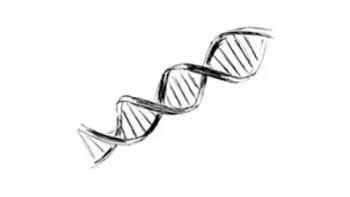
World Cancer Day: Next Generation Sequencing at the Forefront of Precision Medicine

Next generation sequencing is at the forefront of where technology and oncology intersect to help optimize patient outcomes and expand the overall field of cancer care.
World Cancer Day offers a platform to raise the awareness of the latest advancements in oncology that are changing both the treatment of patients and the practice of clinicians around the world. In this regard, Next Generation Sequencing (NGS) continues to be at the forefront of precision medicine in oncology.
The overall goal of NGS in clinical oncology is to create a uniquely personalized treatment approach by identifying genetic mutations specific to each patient. As the list of actionable gene targets in cancer expands, NGS uses a comprehensive profile to detect oncogenic mutations and recommend possible FDA-approved therapy, immunotherapy and clinical trial options tailored for each patient.
Comprehensive genomic profiling, such as the NGS panels we perform at Florida Cancer Specialists & Research Institute (FCS), identifies an actionable mutation for most patients. NGS technology sequences multiple targets simultaneously rapidly.
Patient tumor samples are first submitted to the lab, evaluated by a pathologist, and then advanced through a molecular pipeline that involves DNA/RNA extraction, library preparation, sequencing, bioinformatics, analysis, and reporting. We count on an expert team of professionals to perform these duties, with a shared mindset that helping our patients achieve the best possible outcomes is the highest priority.
Cancer Prevalence
NGS is recommended by the National Comprehensive Cancer Network (NCCN) for multiple tumor types, including non-small cell lung, breast, colon, ovarian and pancreatic cancers, which comprise most cases across the United States. Since both environmental and genetic factors play a role in the pathogenesis of these diseases, understanding the molecular profile of each tumor through molecular diagnostics is essential.
Prevalence of these diseases are currently as follows:
- Lung cancer is the leading cause of cancer-related deaths in the U.S.; survival rates are low and prognosis for late-stage cancers remains poor.1
- Breast cancer remains the most common cancer around the world and the promising detection of molecular biomarkers are helping advance diagnostics, therapy, and other treatments.2
- Colorectal cancer, the third most diagnosed cancer in the U.S., has seen a decreased mortality rate over the years due to effective cancer screening. There has been an increase in early-onset colon cancer, however, in which the cause remains unclear.3
- Ovarian cancer is the fifth leading cause of cancer related mortality in women in the U.S. The primary approach for treatment is immunotherapy. Because some patients do not respond to immunotherapy, NGS plays a role in identifying other biomarkers, such as homologous repair deficient and proficient phenotypes and factors controlling the tumor microenvironment.4
- While pancreatic cancer has been relatively uncommon, with the rapid increase in yearly incidence, it is projected to be the second-leading cause of cancer-related deaths by 2030. Since screening for pancreatic cancer is not available, most patients are diagnosed at advanced stage or metastatic disease.5
Given these statistics and trends, the importance of technological advances comes into play for a more personalized precision medicine approach based on the individual’s molecular profile. NGS can provide powerful results with faster turnaround times, using precious limited tissue samples, than previous sequential testing strategies to identify new biomarker candidates for early diagnosis and help with guiding treatment decisions.
The Solid Tumor Profile, used by FCS analyzes over 500 genes and allows us to detect key biomarkers like tumor mutation burden (TMB), an FDA approved companion diagnostic (CDx) biomarker linked to an FDA-approved drug indication for pembrolizumab (Keytruda) in solid tumors, that is not possible on smaller panels.6
In addition to identifying relevant gene mutations and TMB, our Solid Tumor Profile includes microsatellite instability (MSI), NTRK and other fusions along with concurrent analysis of driver mutations as recommended by NCCN, including, BRAF, ERBB2 (HER2), MET, RET, NTRK, ROS1, EGFR, and ALK.
The Role of NGS in Cancer Care
The analysis of somatic mutations in solid tumors using targeted NGS-based assays has become the standard of care for precision medicine, and it is important that physicians and patients are aware of the efficacy of this method.
With the use of large multigene panels and testing TMB, clinicians can be informed about a patient’s eligibility for anti-programmed cell death 1 (anti-PD1) antibodies and/or clinical trials, which also helps to accelerate drug development.7
Clinicians should be familiar with the types of genomic variants reported by the laboratory and the technology used to determine the results and understand the limitations of current testing methodologies and reports. As techniques evolve and become more cost-effective, the use of molecular testing may prove to add more specificity and improve outcomes for larger numbers of patients.
Knowing a patient’s genomic profile can enable physicians to make the best decisions regarding treatment for the current state of the disease. Treatment can include the FDA-approved drugs as well as the contraindicated drugs if certain variants are present.
For example, sotorasib (Lumakras), which has recently been approved for adult patients with advanced or metastatic non-small cell cancer harboring a KRAS G12C mutation,8 has not only advanced an improved and more individualized precision medicine approach but also opens new pathways to exploring this drug in other tumor types that have the same variant alteration.
A thorough molecular profile using NGS will also identify drugs that the patient should not be treated with, based on the NCCN clinical practice guidelines for non-small lung cancer.9 Using the sotorasib example, the NCCN Guidelines caution that KRAS mutations are predictive of lack of therapeutic efficacy with EGFR TKIs.
The NGS technology will detect these single nucleotide variations, copy number variation, fusions, splice variants and many other biomarkers, which can help complement treatment decisions with a goal towards patients reaching a state of remission and progression-free survival.
Physicians are strongly encouraged to communicate and consult with molecular professionals to further understand the evolving technology, interpretations, and emerging therapies that could be available for patients. In cases where a patient’s profile is unique and there are no therapies available, there are often clinical trials that can be offered to the patient.
Many are offered by FCS physicians or at one of the three FCS Drug Development Units, an in-house precision oncology team can help match a patient to a clinical trial and molecular counselors. Moreover, they can work with physicians to answer questions and provide guidance.
Germline Testing
NGS not only provides a step forward in precision medicine regarding detection of somatic mutations, resistance mechanism and quantification of mutational burden, but it also established the foundation of enabling detection of germline mutations.
Detection of germline mutations is extremely important in the treatment of breast, ovarian, prostate, pancreatic and colon cancer, since certain mutations have FDA-approved therapies, such as PARP inhibitors for patients with advanced prostate cancer. They can also help to inform family members who should be encouraged to start genetic counseling early in life.
According to current guidelines, all ovarian cancer patients should get genetic testing. Not only are BRCA1 and BRCA2 genes the major predisposing genes for ovarian cancer, mutations in RAD51C and RAD51D are associated with high ovarian cancer risk.10 With that, identifying germline mutation in RAD51C/D is important for preventive care and can make a prognostic difference.
Several other hereditary cancers are associated with different genes, with a crucial role in the DNA damage response pathway, such as the mismatch repair genes in Lynch syndrome, TP53 in Li-Fraumeni syndrome, STK11 in Peutz-Jeghers syndrome, CHEK2, RAD51, BRIP1, PALB2 and MUTYH-associated polyposis.11,12
Increasing demand for germline testing in cancer and a shortage of genetic counselors has created a need for alternative care models and encouraged oncologists to take a more active role in performing germline testing. The NCCN guidelines provide an extensive resource for germline assessment as well as other considerations for NGS testing.
Looking to the Future Potential of NGS
NGS has evolved tremendously over the years and transitioned from research to clinical use due to the amount of genomics data that is collected during sequencing, and NGS continues to move into more areas of cancer care to better support the clinical practice.
In addition, NGS can bring more discovery into the clinical practice for the treatment of patients with solid tumors and heme neoplasm for somatic mutations, but also for germline testing. Moreover, NGS opens the possibilities up for other tests, such as whole genome sequencing for homologous recombination deficiency testing, and many other targetable biomarkers that are being discovered and recommended to act on that will continue to reshape oncology care for more world cancer days to come.
REFERENCES:
1. Kruglyak KM, Lin E, Ong FS. Next-Generation Sequencing and Applications to the Diagnosis and Treatment of Lung Cancer. Adv Exp Med Biol. 2016;890:123-36. doi: 10.1007/978-3-319-24932-2_7
2. Loibl S, Poortmans P, Morrow M, et al. Breast cancer. Lancet. 2021 May 8;397(10286):1750-1769. doi: 10.1016/S0140-6736(20)32381-3
3. Thanikachalam K, Khan G. Colorectal Cancer and Nutrition. Nutrients. 2019 Jan 14;11(1):164. doi: 10.3390/nu11010164
4. FDA approves pembrolizumab for adults and children with TMB-H solid tumors. News release. June 17, 2020. Accessed: December 13, 2022. https://bit.ly/3PnhNzm
5. Morand S, Devanaboyina M, Staats H, et al. Ovarian Cancer Immunotherapy and Personalized Medicine. Int J Mol Sci. 2021 Jun 18;22(12):6532. doi: 10.3390/ijms22126532
6. Rahib L, Smith BD, Aizenberg R, et al. Projecting cancer incidence and deaths to 2030: the unexpected burden of thyroid, liver, and pancreas cancers in the United States. Cancer Res. 2014 Jun 1;74(11):2913-21. doi: 10.1158/0008-5472.CAN-14-0155
7. Mosele F, Remon J, Mateo J, et al. Recommendations for the use of next-generation sequencing (NGS) for patients with metastatic cancers: a report from the ESMO Precision Medicine Working Group. Annl of Oncol. 2020 Nov; 31(11):1491-1505. doi.org/10.1016/j.annonc.2020.07.014
8. FDA grants accelerated approval to sotorasib for KRAS G12C mutated NSCLC. News release. May 28, 2021. Accessed: December 13, 2022. https://bit.ly/3BuWRB2
9. Ettinger DS, Wood DE, Aisner DL, et al. Non-Small Cell Lung Cancer, Version 3.2022, NCCN Clinical Practice Guidelines in Oncology. J Natl Compr Canc Netw. 2022 May;20(5):497-530. doi: 10.6004/jnccn.2022.0025
10. Soukupová J, Lhotová K, Janatová M, et al. Germline mutations in RAD51C and RAD51D and hereditary predisposition to ovarian cancer. Klin Onkol. 2021 Winter;34(1):26-32. English. doi: 10.48095/ccko202126
11. Pietragalla A, Arcieri M, Marchetti C, et al. Ovarian cancer predisposition beyond BRCA1 and BRCA2 genes. Int J Gynecol Cancer. 2020 Nov;30(11):1803-1810. doi: 10.1136/ijgc-2020-001556
12. Ma H, Brosens LAA, Offerhaus GJA, et al. Pathology and genetics of hereditary colorectal cancer. Pathology. 2018 Jan;50(1):49-59. doi: 10.1016/j.pathol.2017.09.004







































